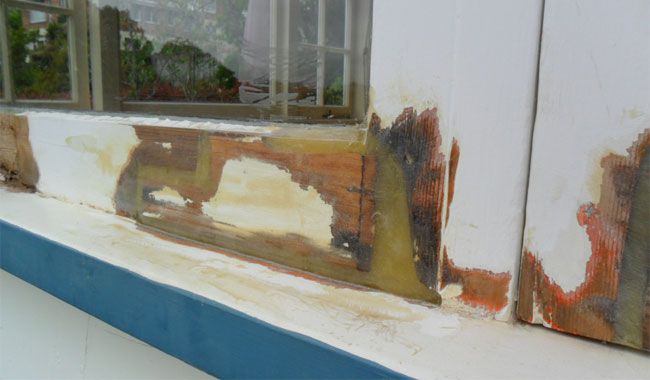Windows are an important feature in any home. Windows look nice while helping to keep out the elements, such as rain and snow. They also block out the wind, and protect homeowners from extreme temperatures. However, this constant exposure to the everchanging weather wears down the windows over time and causes them to need to be replaced or repaired to continue providing protection. Here are the steps you need to take when repairing rotten windows.
Step 1: Inspect the Damage and Gather Materials
Wooden windows look great and when properly maintained. They keep out the elements and help reduce energy costs. However, exposure causes cracks in the wood and gaps between sections of the frame. Unfortunately, once an area begins to rot, the clock starts ticking to get it fixed because the rotted wood will spread fast. Small pieces could break off from the frame, and over time, larger areas could affect the stability of the window and lead to a dangerous situation in need of immediate repairs.
You will need:
- Chisel or flathead screwdriver
- Scrub brush
- Liquid epoxy
- Clean rag
- Wood glue
- Caulk
- Pre-treated wood
- Wood filler
- Putty knife
- Paint
- Rough- grit and fine-grit sandpaper
Step 2: Remove the Rotten Areas
Carefully scrape away the rotten areas using the chisel or flathead screwdriver. Rot often starts in the corners between connecting pieces. Once it’s clear and the healthy wood is exposed, use the brush to clean the surface. Although it’s not necessary, an oscillating multi-tool can help cut away damaged wood quickly and efficiently.
Step 3: Stabilize the Frame
First, coat the area that was rotted with transparent epoxy. Allow it to sit for around five minutes and add a second coat. This prepares it for adding wood fillers. Next, mix your filler according to the directions. Using a putty knife, carefully mold the area into the shape of the missing wood pieces, making sure to pack it tightly. After molding the new areas, use the rough-grit sandpaper to match all the frame’s groves and ensure everything is level. Always wear protective eyewear, a mask, and gloves when working with epoxies and in environments with high levels of dust and paint particles.
Step 4: Adding New Sections
You may have some areas that are too rotted to use only epoxy and fillers. If this is the case, after chiseling away all the rotten wood, you’ll need to cut the section out completely. After removing the area, replace it with a new piece using quality wood glue. For best results, paint all sides of the treated wood before installing it for extra protection from the elements.
Step 4: The Finishing Touches
Before you can repaint the entire frame, you must prepare the area. Use the rough-grit sandpaper to level any wood glue, filler, or new pieces. Next, follow up with the fine-grit sandpaper to smooth out the surface before painting. Additionally, use the brush to wipe away large wood particles and a clean rag to wipe off dust. Always strip all the stain or paint from the entire frame before repainting. Painting over the older layers will leave you less protected, flaking sooner and may appear bumpy, and unprofessional.
Make sure to add caulk to any cracks and corners that are remaining after the repairs. This will ensure your windows are airtight and will provide the most protection from the weather. You will get better results by using a primer before the finishing coat of paint. Before painting, use painters tape on the glass and around the outside of the frame to protect areas that don’t require painting.
Regular Maintenance
How often you need to repaint your wooden window frames to protect them from the elements depends on where you live. For example, windows that are always in direct sunlight will need to be cared for sooner than ones in shaded areas. On average, you’ll need to repaint them with quality, outdoor paint or stains to reduce deterioration every three to five years.
Repairing a rotten window isn’t difficult if you have the time and tools. If you don’t have that or if the damage is beyond the scope of these steps or you have multiple windows to repair, it may be time to contact a professional. For an evaluation of your window repairs, contact us today.



0 Comments